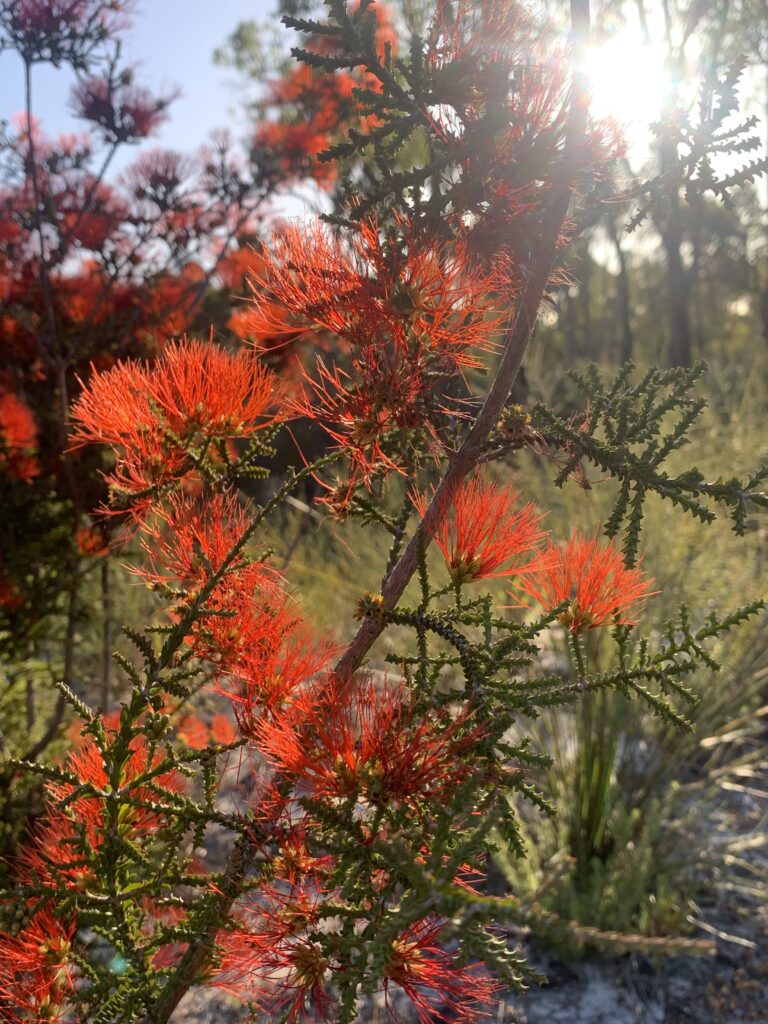Ant season, or the season of adulthood
Djeran season at last sees a break in the really hot weather. It roughly correlates with the calendar months of April-May but this year it’s on the way early, and man are we happy about the rain!
A key indicator of the change of season is the cool nights that bring back the fresh early morning dew. As the season progresses the nights will become cooler and damper, along with some cool and rainy days. You’ll still have warm and sunny days too, but the sun isn’t as intense as in Birak and especially Bunuru. The winds have also changed, especially in their intensity, with light breezes generally swinging from the south-east to south-west.
You can also see the season changing in the landscape, in particular the vegetation, with the white flowers of Bunuru giving way to red. Djeran is a time of red flowers, including the red flowering gum (Corymbia ficifolia) on the south coast, the smaller and more petite flowers of the summer flame (Beaufortia aestiva) in the north of Nyungar Country and in the jarrah-marri forest areas of the south west, the striking species that our very own Managing Director Nerilee Boshammer-Bennell captured earlier this week between Busselton and Nannup (a gold star for anyone who can tell us its name – it’s spectacular!).
You may also notice the red ‘rust’ and seed cones forming on the male and female sheoaks (Allocasuarina fraseriana), called condil. Banksias start to display their flowers too.
Also, flying ants can be seen cruising around in the light winds. The previous season’s young have reached maturity and most have either left their parents or are getting ready to. This is why it is also often referred to as the ‘ant season’ or ‘the season of adulthood’.
Traditionally, foods at this time of year included the seeds (bayu) that had been collected and stored for treatment from the zamia (djiriji) last season along with the root bulbs of the yanget (rushes), bardi grubs, fresh water fish, kooyar (frogs), yakaarn (turtles) and quenda (southern brown bandicoot). Mia-mias (houses or shelters) were repaired and reinforced at this time of year also, to make sure they were waterproofed and facing in the right direction in readiness for the cold and wet weather to come.



